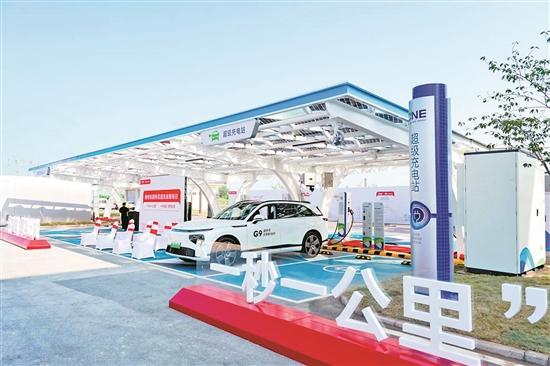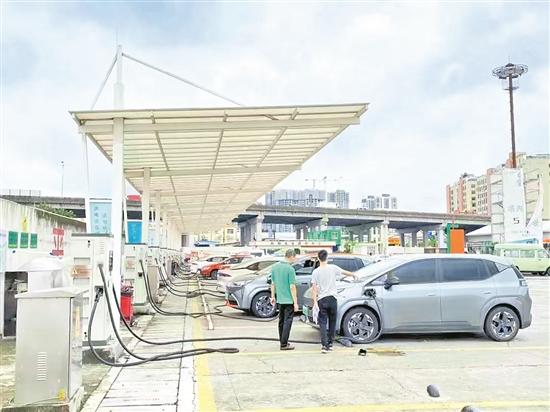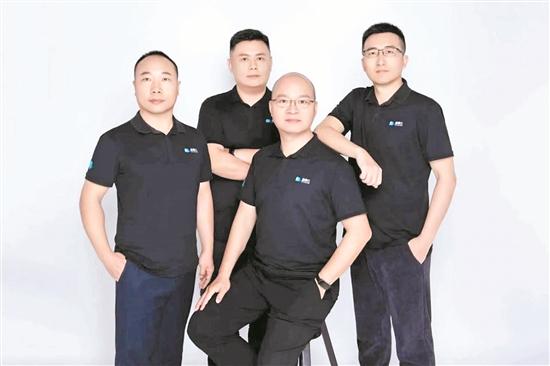
Since BYD built the first batch of charging stations in Shenzhen in 2006, China's charging infrastructure has rapidly developed, forming the world's largest, most extensive, and most diverse charging infrastructure system. As of 2024, the ratio of pure electric vehicles to charging stations in China's new market has reached 1:1. As of June 2024, the top four charging operators in China by the number of charging stations are Teld, Star Charge, YKC, and S Since BYD built the first batch of charging stations in Shenzhen in 2006, China's charging infrastructure has rapidly developed, forming the world's largest, most extensive, and most diverse charging infrastructure system. tate Grid, with Guangzhou-based tech company Evking ranking fifth. Evking has made numerous innovations and developments in the new energy industry platform due to its keen business acumen.

After 2015, as the new energy vehicle market took off, the charging station industry also began to thrive. However, equipment manufacturers were operating in isolation from one another, each with its platform that didn't communicate with others. This led to issues for car owners, such as uncertainty about whether a charging station was open to private vehicles, being denied entry to charging stations upon arrival, difficulties finding fast charging, or overly complicated payment processes, all due to the lack of data connectivity.
The challenges caused by isolated platforms led Evking's founders to propose two key visions: First, to aggregate new energy charging station data into a single platform, and second, to make these resources accessible to car owners with unified payment and backend services.

Sun Gongchen, one of Evking's co-founders, explained to reporters that there are three types of platforms in the market. The first category includes equipment manufacturers like Teld and Star Charge, the second consists of charging station operators like State Grid and local urban investment companies, and the third includes car manufacturers and map service providers offering car owner services. Most of these platforms are semi-open and focus primarily on their service areas. Evking aims to create an open platform based on these, allowing customers of all three types to access all services through Evking.
Today, Evking has aggregated over 5,000 charging operators and hundreds of large state-owned enterprises, covering most major cities nationwide. The previously scattered streams of data have converged into a powerful current, enabling car owners to find and efficiently use charging stations.

In addition to providing advanced software support, Evking also dives deep into offline ecosystems, offering comprehensive support to partners, including construction coordination, site development guidance, and financial linkages. This demonstrates Evking's full-service capabilities in the charging service sector. Sun Gongchen noted that the platform's openness, allowing both major and minor players to benefit, is one reason why Evking has been able to gather over 5,000 operators.
Looking ahead, Evking will face the challenge of managing an explosion in data volume. Sun Gongchen has identified two critical areas for iteration: increasing research and development investment to enhance platform stability and data processing capabilities, and deeply integrating the charging network with the vehicle network and energy networks, including solar, storage, and virtual power plants, to usher in a new era for new energy vehicles and smart energy.
Source :Lingnan on the Cloud
搞汽车充电“平台的平台” 这家广州科创企业有点“野”
自2006年比亚迪在深圳建设第一批充电桩至今,我国充电基础设施快速发展,已建成世界上数量最多、服务范围最广、品种类型最全的充电基础设施体系。中国2024年增量市场的纯电动车的车桩比已经达到1∶1。截至今年6月,全国充电运营企业所运营充电桩数量前四名依次为特来电、星星充电、云快充、国家电网,广州本土科创企业蔚景云排在第五位。蔚景云凭借敏锐的商业嗅觉,在新能源行业平台的创新和发展上做出诸多尝试。
2015年后,新能源汽车迎来风口,充电桩行业也随之兴起,但各家设备厂商之间是相互孤立的,尽管每家厂商都拥有自己的平台,但平台与平台之间并不相通。难以知悉充电站是否向私家车开放、导航过来后发现园区不让进入、赶时间时想找个快充却发现全是慢充、支付过于烦琐不便,这些都是数据不连通情况下,车主常常遇到的窘境。
平台间相互孤立带来的困扰让蔚景云的创始人们提出了两个美好的愿景:一是把新能源充电桩数据资源聚合在一个平台上;二是把这些资源向车主开放,在支付和后端服务上再做统一。
蔚景云联合创始人之一的孙功臣向记者介绍,市场上做平台的有三类:第一类是以特来电、星星充电为代表的设备厂商,第二类是国家电网、地方城投为代表的充电站运营商,第三类是以整车厂商、图商为代表做出来的车主服务平台。这些平台大多为半开放平台,更关心自己的服务领域。而蔚景云要做的就是在这些平台之上再搭建一个开放的平台,让这三类平台的客户都能通过蔚景云得到所有平台的服务。
如今,蔚景云已经聚集5000多家充电运营商户、上百家大型国企,基本覆盖全国的主要城市,以往分散的数据支流通过蔚景云汇聚成洪流,一步步地让车主找到桩、用好桩。
除了提供先进的软件支持,蔚景云还深入线下生态,为合作伙伴提供全方位的助力,包括但不限于施工协调、站点建设指导,以及金融链路的畅通,展现了蔚景云在充电服务领域的全面服务能力。因为开放,无论是大玩家还是小玩家都能从其中获得便利,孙功臣形容,这也是蔚景云汇聚5000多家运营商的原因之一。
展望未来,蔚景云将面临数据量激增带来的挑战,孙功臣已明确两个重要迭代方向:一是加大研发投入,确保平台稳定性与数据处理能力的提升;二是将充电网与车辆网,和光伏、储能、虚拟电厂等业务在内的能源网深度融合,共同开启新能源汽车与智慧能源的新篇章。
文 | 羊城晚报记者 戚耀琪 实习生 叶帝吕
图 | 受访者提供
译 | 赵凡
英文审校 | 林佳岱
-
Poster丨The 2024 Guangdong Triathlon started in Ruyuan
2024-08-27 21:36:15 -
Video | Lingnan Water Town International Cartoon and Animation Week kicks off
2024-08-26 22:38:33 -
'Black Myth: Wukong' boosts Shanxi Tourism for National Day Holiday
2024-08-26 22:38:34 -
Photos | Guangdong's guardian of Nyingchi
2024-08-26 22:38:30






